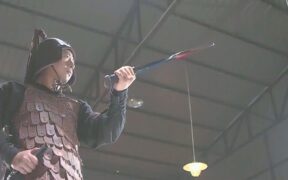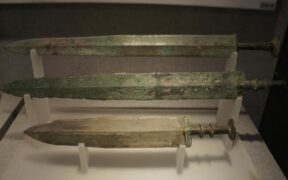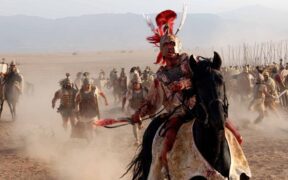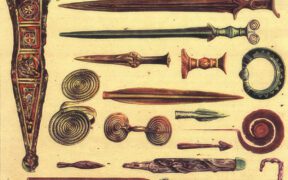Our content features commercial links to our products, committed to transparent, unbiased, and informed editorial recommendations. Learn More
The Mystery Behind the Sword of Genghis Khan
NO AI USED This Article has been written and edited by our team with no help of the AI
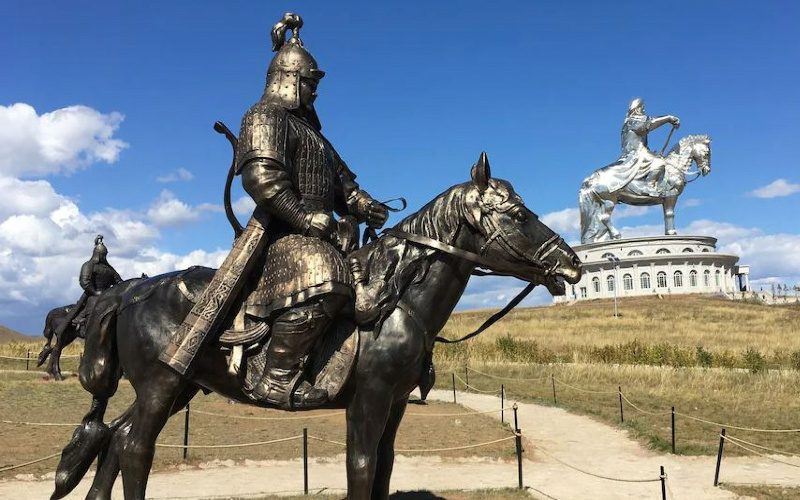
One of the greatest generals and conquerors also kept his famed sword close at hand. In leading the Mongols, Genghis Khan created one of the world’s largest empires. Even though bows for mounted combat were his army’s primary weapon, he had a deep and ongoing affection for his many swords.
Throughout his life, Genghis Khan had several weapons, and as his empire expanded, he discovered and used many other kinds of swords. However, the Mongol Turkic sabre is most often associated with him. In this article, we will cover its characteristics and uses as well as its history.
Who was Genghis Khan?
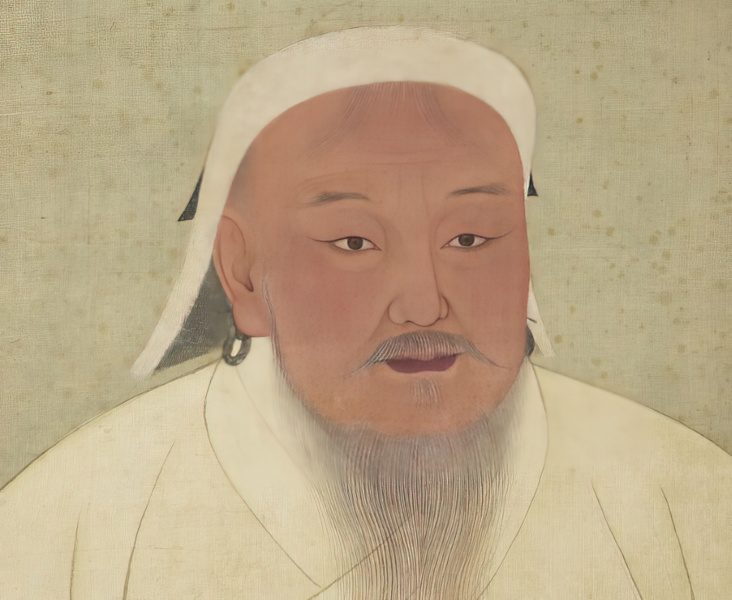
Genghis Khan (1162-1227), born under the name Temujin, was the first Great Khan of the Mongolian Empire, which, after his passing, became one of the largest empires in history, covering almost an entire continent. His rise to power began when he united a large number of the nomadic peoples who roamed the Mongol Steppe and was afterward hailed as Genghis Khan, the supreme ruler of the Mongols.
He is revered as one of the most brilliant masterminds of warfare and strategy and a great example of psychological warfare. As we can see in Mongol texts, he was devoted to his god Tengri and saw it as his mission and destiny to conquer the world in his name.
His army, which started out relatively small in the year 1205, moved forward and, within 40 years, forged an empire that was more than twice as big as Rome’s. Around 40 million people(11% of the world’s population, today around 750 million) have lost their lives due to this conquest. But the Mongols’ best weapons weren’t their bows or swords, cavalry, drive, or ability to withstand warfare. Their greatest weapon was terror.
Sometimes 30 to 40% of the populace of the countries they occupied, such as Hungary, were killed. Often it was ordered that entire villages and cities be leveled, right down to removing the stones from the structures. Nothing was spared on occasions as well, not even the dogs and cats. Because of this widespread terror, many countries capitulated before the Mongols even arrived.
Characteristics of the Sword of Genghis Khan
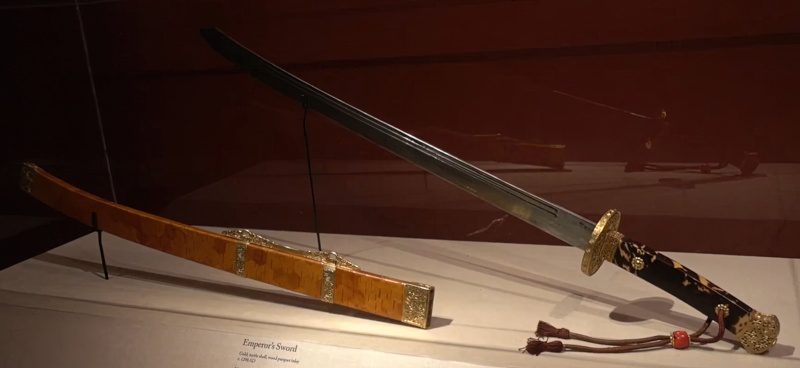
Genghis Khan’s preferred style of sword was the Turkic Mongol sabre. The sword on display in The Museum of Genghis Khan in Mongolia is an early example of the weapon, which can be found throughout Asia and the Eurasian Steppe beginning in the 8th century.
Blade
The blade of the sword used by Genghis Khan was slightly curved and single-edged, sharpened on one side. It isn’t as curved as the Persian Shamshir or straight as the Chinese Dao sword. These bladed weapons came in handy during mounted warfare and were used for slashing the enemy, a tactic that the Mongols excelled at.
The material of which the sword of Genghis Khan was made is crucible steel, an ancient and forgotten method that first developed throughout India, only to be lost with time. The most probable blade length for the sword of Genghis Khan is 27 to 35 inches (70 to 90 cm).
Guard
Although the outer influence of China and Japan was present in the sword-making of Mongolia, bringing in the round circular guard, it may have had a narrower type of guard, as seen in the early Turkic Mongol sabres found throughout Central Asia. Also, the Turkic Mongol sabers featured straight quillons, as were found in many nomadic burials in the south Russian steppes.
The important thing is that it was small enough not to interfere with the swift movements of mounted attacks.
Handle

The handle is the same as a Turko-Mongol sabre, curved with an elevated tip near the guard, offering a much stronger grip and leverage when swinging it from a higher position. There is also some question as to whether or not the handle had the curve of a Turkic Mongol sabre. Instead, it may have been much straighter like the Chinese Dao.
More than likely, the handle also featured a tassel or a rope that could go through the user’s hand to ensure he wouldn’t lose his grip and risk losing his sword.
Length
The curved sword used by Genghis Khan was most likely in the range of the Turkic Mongols’ saber, which is 30 to 50 inches (75 to 127 cm), the ideal length for a weapon that could be used for lacerating the enemy from horseback.
Weight
The weight of the sword of Genghis Khan was in the range of 1.5 to 2.7 lbs (0.7 to 1.2 kg). This would be the ideal light cavalry sword for mounted combat. Considering that Genghis’s army could ride a horse from the age of three, they would feel the weight of the sword as part of themselves and could time the stomping and attack in perfect and very precise moments.
Use of the Sword of Genghis Khan
Genghis Khan’s sword is single-edged and primarily used as a one-handed weapon that could be a Turkic Mongol saber or a Chinese Dao sword. It has a slightly curved handle with a slightly curved blade meaning that it is most effective for several methods of offense, including tearing gashes into or thrusting the opponent.
Warfare

It shouldn’t be confused that the sword of Genghis Khan was a secondary weapon as he emphasized horse archery which brought him much glory and territorial conquest. With that being said, his personal sword could have seen combat as it was not a highly ceremonial tool.
Modern
Today, many reenactments occur throughout Mongolia and other parts of the world, highlighting the excellence of the Mongolian Army. The Genghis Khan sword can be seen in many LARP (live-action roleplaying) events and Mongolian history martial arts at the Bajutsu, Bokh, or Nadaam festivals which take place throughout Asia.
History of the Genghis Khan Sword
The Mongolians loved confiscating trophies from the lands they conquered, and Genghis Khan came into possession of many different swords during his conquests, primarily in China.
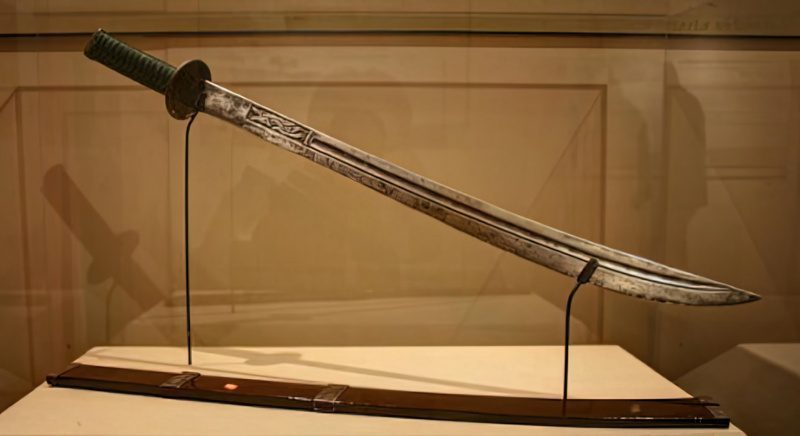
Mongolian warriors used an array of swords in battle, as seen in the illustrations of the time. Genghis Khan, however, forbade anyone to create drawings or portraits of him, possibly so that he could be seen as a mystical and god-like leader sent from Tengri himself.
The military leader used his sword alongside his bow and arrow in his battles. The continued success of his empire included conquests even after his death, and his sword influenced many different types of scimitars and sabres, bringing some change to the Chinese swordsmith’s design.
Genghis Khan’s sword also impacted the Japanese by making their blades more robust and longer versions of the Tachi, which evolved into the well-known Katana sword.
Where is the Genghis Khan Sword Today?
When Genghis Khan died, he had his weapons, presumably his sword, buried and placed next to his body. But because the location of his tomb remains unknown, finding the sword is unlikely. The Genghis Khan Mausoleum in North China might be mistakenly seen as his tomb by some. Still, it hasn’t been verified or accepted by scholars, archeologists, and historians and is more of a temple or cenotaph.
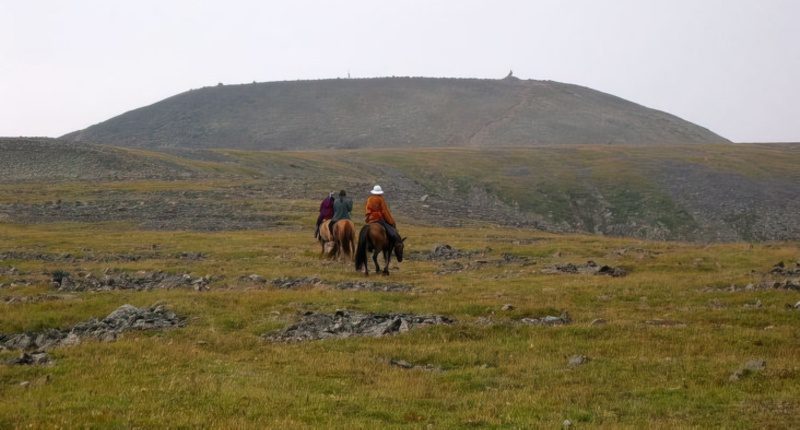
There are many legends about why his tomb nor his sword cannot be found. Here we shall present some of the most interesting ones.
- Rumors told by Marco Polo say that 2,000 slaves assisted in the ceremonies during the funeral of Genghis Khan but were all killed by the guards looking after them. These guards were themselves slaughtered by another squad of soldiers who destroyed anyone who came near the vicinity of their leader’s grave. Legend has it that when these soldiers arrived at their base, they committed suicide to protect their deceased commander’s tomb.
- An unknown river was re-curved, changing its current so that the tomb of the great Genghis Khan could be hidden beneath it. The river was then brought back to flow on top of the grave, keeping it completely hidden.
- Many horses that marched in the army of Genghis Khan stampeded over his grave, and several trees were planted over the area to disguise it.
This mystery of the tomb of Genghis Khan remains today. Modern historians believe that the military genius, along with his sword, is buried in the Burkhan Khaldun mountain range.
Conclusion
Genghis Khan, who sparked the expansion of the Mongol Empire, is widely recognized as a legendary military leader. His achievement and the strange aspects around his grave and sword lead to this weapon being as mysterious and popular as the famed Excalibur, the legendary sword of King Arthur.
